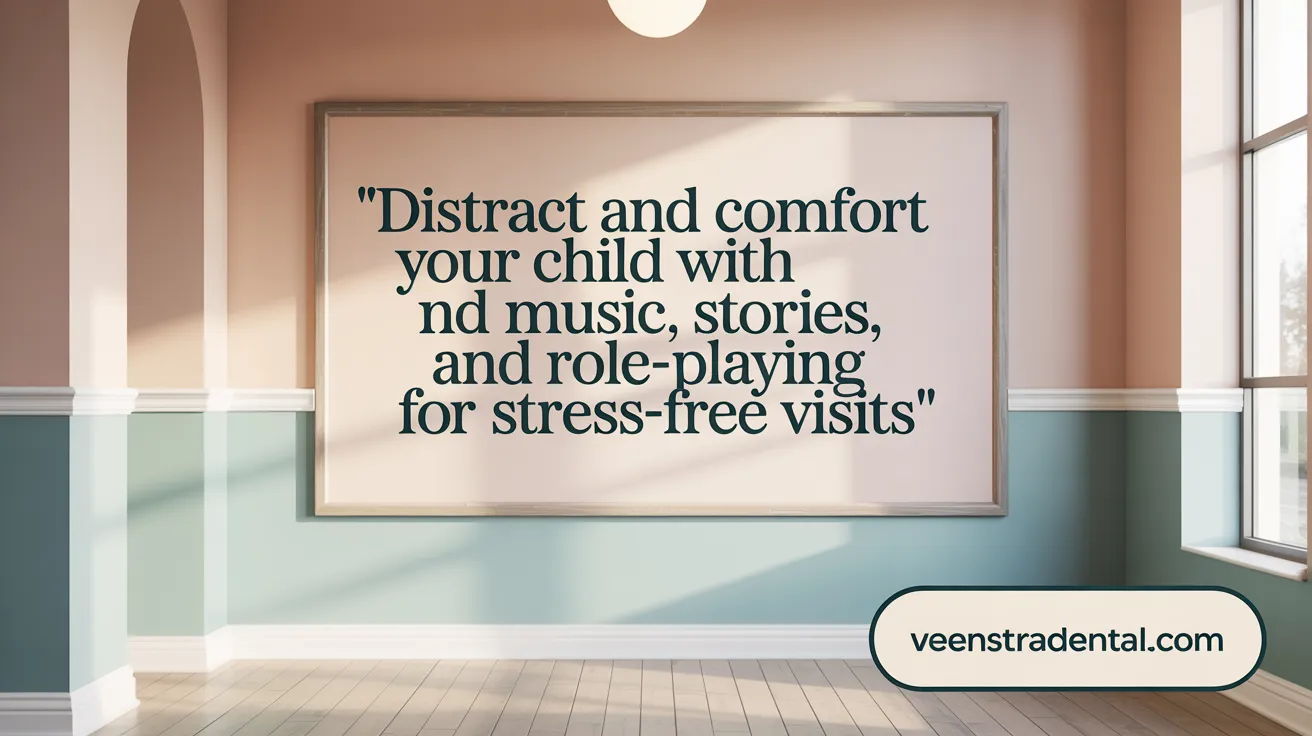Understanding the Importance of Early Visits
Introducing children to medical and dental visits early in life is crucial for establishing a foundation of comfort, trust, and healthy habits. Families often feel anxious about these first visits, but with thoughtful preparation and supportive environments, these experiences can be transformed into fun, stress-free occasions that foster positive lifelong attitudes toward healthcare and dental routines. This article explores strategies to create welcoming, engaging, and reassuring visits for children’s first encounters with doctors and dentists.
Preparing Children and Parents for the First Visit

When is the optimal time for a child’s first dental or medical visit?
The first dental visit should occur by age one or within six months after the first tooth appears, ideally scheduled in the morning when children tend to be more alert and cooperative. For medical check-ups, well-child visits begin at 12 months and continue at set milestones to monitor growth and development.
How can parents prepare children for their first visits to reduce fear and anxiety?
Parents can ease children's fears by using positive, simple language that avoids scary words. Reading age-appropriate books or watching videos about doctor or dentist visits helps children understand what to expect. Role-playing games like "pretend dentist" or medical exams familiarize children with procedures and build comfort through role-playing for reducing medical anxiety.
What role does parental behavior play in children’s comfort during visits?
A calm and positive parental attitude is crucial since children often reflect their caregivers' emotions. Relaxed, reassuring behavior by parents helps children feel safe and reduces anxiety, promoting a more pleasant visit and aligns with positive reinforcement systems in pediatric healthcare.
What items can parents bring to make visits less stressful for children?
Comfort objects such as beloved stuffed animals, toys, or soft blankets offer children security in unfamiliar settings. Additionally, bringing engaging books or calming music can serve as helpful distractions during appointments aligns with strategies for comforting infants during medical visits.
Designing a Child-Friendly Environment

How can the physical environment be tailored to improve children’s experiences?
Creating welcoming and engaging spaces in dental and medical facilities plays a crucial role in reducing children's anxiety. Bright, colorful decor combined with toys and interactive technology such as ceiling-mounted TVs help transform what might be a stressful visit into an enjoyable experience. For example, many pediatric dental offices use walls painted in vibrant colors and offer stuffed animals or comfort items to soothe nervous children.
Sensory-friendly and calming areas are another important aspect. Adjustments such as soft lighting, gentle background sounds or music, and calm waiting rooms cater to children with sensory processing challenges, fostering a sense of security and comfort. These thoughtful environmental tweaks can greatly reduce fear and overstimulation. Learn more about Creating safe and nurturing learning environments.
Providing private exam rooms enhances the feeling of safety and control for children, allowing personalized care tailored to each child’s unique needs. Personalized attention from healthcare providers, combined with a supportive environment, encourages trust and cooperation. For guidance on helping children cope during doctor visits, see helpful coping strategies for children during visits.
In summary, spaces that feel inviting and safe—through the use of color, toys, technology, sensory considerations, privacy, and individualized care—are fundamental in creating optimal experiences for children during dental and medical visits. For a comprehensive view on designing optimal learning and healthcare environments for children, consider these essential design elements.
Engagement and Distraction Techniques During Visits

How can role-playing for reducing medical anxiety and pretend play help children prepare for dental and medical visits?
Role-playing at home is a powerful tool for familiarizing children with what to expect during dental or medical appointments. By playing 'dentist' or 'doctor' using toys or dolls, children become comfortable with the procedures in a low-pressure setting. This playful approach helps demystify the experience and reduces anxiety, making actual visits less intimidating. For more on using role-playing for reducing medical anxiety and Making dental visits fun for kids, see Helping Children Cope During Doctor Visits.
What distraction strategies can be used to help children during visits?
During appointments, distraction techniques such as listening to soothing music, reading engaging stories, or playing simple games can effectively capture a child's attention. These strategies help divert focus from potentially scary medical or dental procedures, creating a calmer and more positive environment. For detailed strategies on distraction and comforting children, refer to Helping Children Cope During Doctor Visits and Preparing your child for doctor visits.
Why is explaining procedures important for reducing fear?
Simple, age-appropriate explanations about what will happen during the visit give children a sense of control and understanding. Showing instruments beforehand and describing their purpose in child-friendly language helps alleviate fears by removing the unknown aspects of the visit. Learn more about this approach in Understanding Your Child's First Dental Checkup and Preparing Your Child for Their First Dental Visit.
How do positive reinforcement systems in pediatric healthcare and reward systems support children's cooperation?
After the appointment, giving children small rewards like stickers, certificates, or special outings acknowledges their bravery. Positive reinforcement encourages them to view future visits with less fear and more cooperation. Visual progress charts or consistent praise also motivate children to maintain good behavior and oral hygiene routines. For more ideas on reward systems and positive reinforcement, see positive reinforcement systems in pediatric healthcare and Stress-Free Family Dental Visit Tips.
Summary Table:
| Technique | Description | Benefit |
|---|---|---|
| Role-playing | Pretend medical or dental play at home | Familiarity reduces anxiety (source) |
| Distraction | Music, stories, games during visits | Diverts attention, eases stress (source) |
| Procedure explanation | Using simple words and showing tools | Empowers child, reduces fear (source) |
| Positive reinforcement | Rewards and praise after visits | Encourages cooperation and confidence (source) |
Specialized Pediatric Care for Comfort and Trust
Why is choosing specialized pediatric providers beneficial?
Choosing pediatric specialists for your child’s dental and medical care offers significant advantages. Pediatric dentists receive additional training specifically focused on children’s oral development and behavior. This specialized education equips them with gentle, child-friendly techniques that cater to young patients’ physical and emotional needs through positive reinforcement systems in pediatric healthcare. Similarly, pediatric healthcare providers have expertise in the developmental stages of childhood, enabling them to communicate effectively in ways that are reassuring and appropriate for children. These tailored approaches help reduce fear and anxiety, creating a welcoming atmosphere where children feel safe and understood. Learn more about choosing a pediatric dental practice and the importance of pediatric well-child visits.
How can involving children in their care improve their comfort?
Involving children in their healthcare processes empowers them and helps build trust. Providing age-appropriate choices, such as selecting a flavor of fluoride treatment or choosing a distraction activity, gives children a sense of control. Explaining procedures in simple, clear terms prepares them for what to expect and decreases uncertainty. This active participation fosters confidence and cooperation during visits. When children feel heard and involved, their anxiety diminishes, and the entire experience becomes more positive. See tips for helping children cope during doctor visits and methods for role-playing for reducing medical anxiety and using positive language and role-playing dental procedures.
Through the combination of specialized knowledge and a compassionate approach that encourages child involvement, pediatric providers create a foundation of comfort and trust that supports lifelong healthy habits. For additional guidance, explore preparing your child for their first dental visit and learn how to make pediatric visits easy.
Building Positive Associations for Future Visits

How can positive associations be built to ensure future cooperation?
Building positive associations starts with early introductions to dental and medical visits. Scheduling a child's first dental visit by age one or within six months of the first tooth and maintaining routine visits every six months encourages familiarity and comfort. Similarly, adhering to well-child visits at recommended ages ensures children grow accustomed to medical environments.
Celebrating achievements during visits, whether through praise, small rewards, or visual progress charts creates positive reinforcement. Role-playing visits at home and using comforting items like stuffed animals or blankets can ease anxiety. Teaching children coping skills such as deep breathing and mindfulness enables them to manage stress independently during appointments.
Why is consistency important in children’s healthcare experiences?
Consistency is crucial for building trust among children, parents, and healthcare providers. Regular, nurturing visits help children feel safe and supported. Frequent monitoring aids in early detection of potential health or dental issues, allowing for timely interventions.
Familiar environments and routines reduce fear and uncertainty, making each visit smoother and contributing to long-term, positive attitudes toward healthcare. This consistent exposure fosters lifelong habits of regular medical and dental care, promoting overall health.
Teaching self-regulation and coping skills
Introducing children to coping mechanisms like deep breathing, counting, or engaging in distraction activities helps them feel empowered during visits. Mindfulness exercises can be incorporated into daily routines to improve emotional control and reduce procedure-related stress.
Parents and providers who model calm, supportive behavior further encourage children to develop healthy coping strategies, enhancing cooperation and making visits less stressful. For more strategies, see Helping Children Cope During Doctor Visits.
Importance of follow-up and consistent care
Following up after appointments reassures children and families that their health is continuously cared for. Consistent care routines establish stability and predictability, crucial factors in reducing anxiety. Health professionals can track developmental progress and adjust care plans accordingly, ensuring children receive tailored support throughout their growth. For comprehensive guidelines, refer to the schedule of pediatric appointments and well-child visits.
Creating a Foundation for Lifelong Health and Comfort
The first encounters children have with doctors and dentists lay the groundwork for their attitudes toward health and wellness throughout life. By thoughtfully preparing children and parents, creating welcoming and supportive environments, engaging children with comforting and distraction techniques, and utilizing specialized, compassionate care providers, these visits can become enjoyable experiences rather than sources of stress. Establishing positive routines and celebrating children’s bravery encourages ongoing cooperation and fosters a sense of confidence and security. Ultimately, these early efforts create a fun, stress-free foundation that supports children’s physical and emotional well-being well beyond their first visits.
